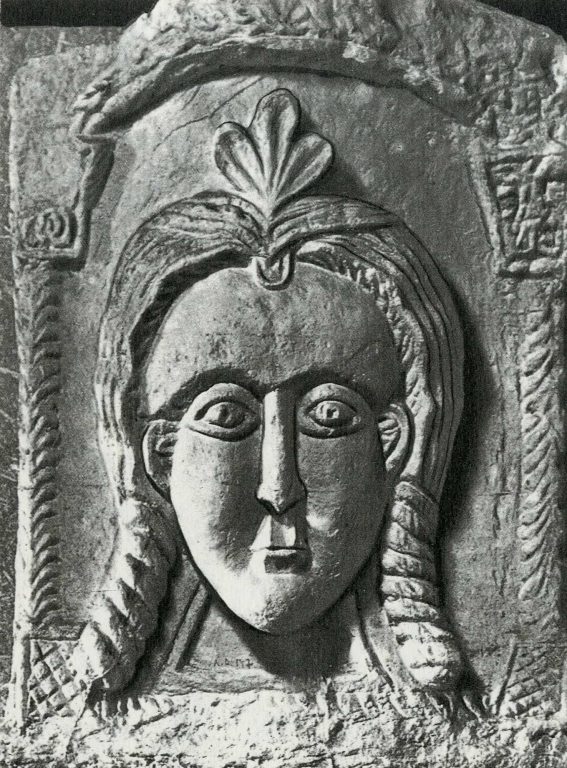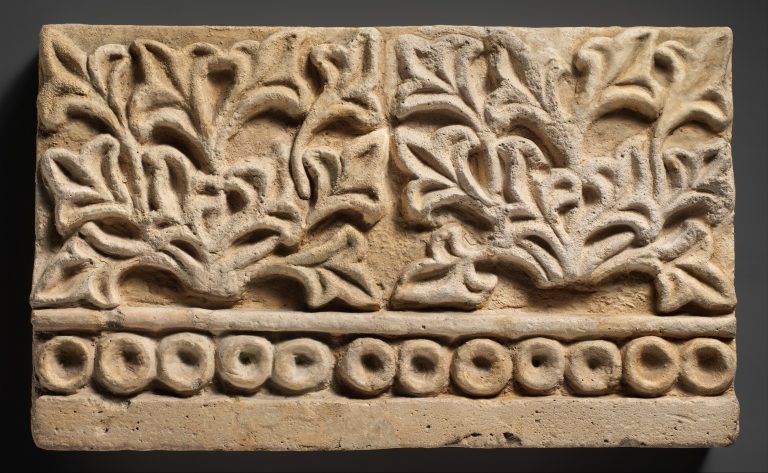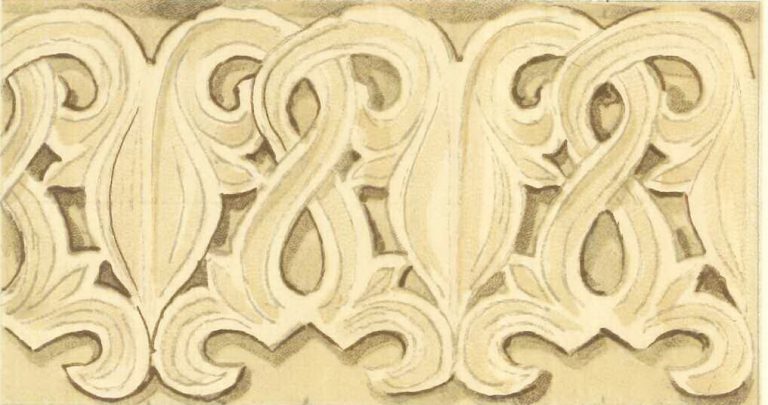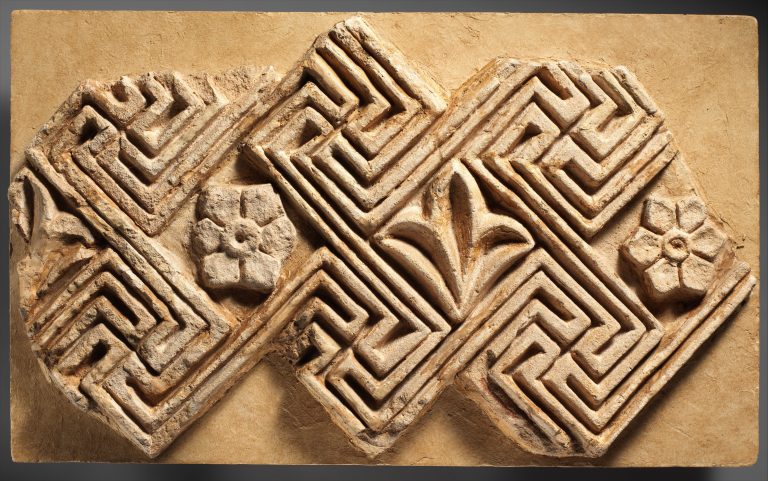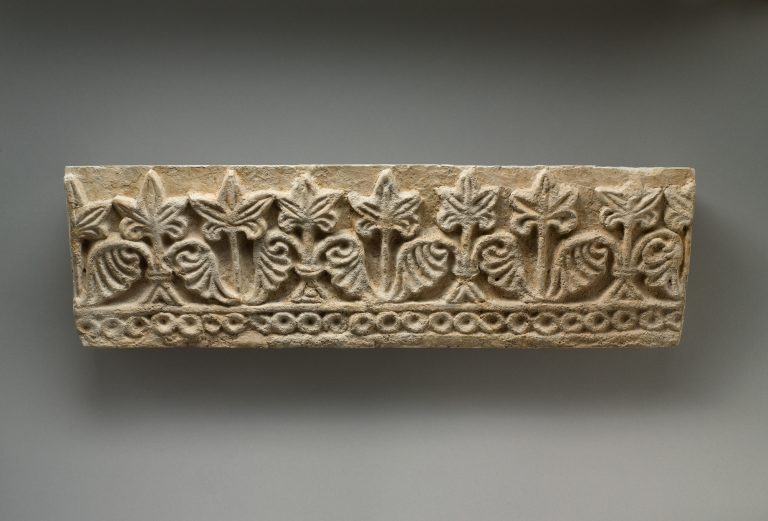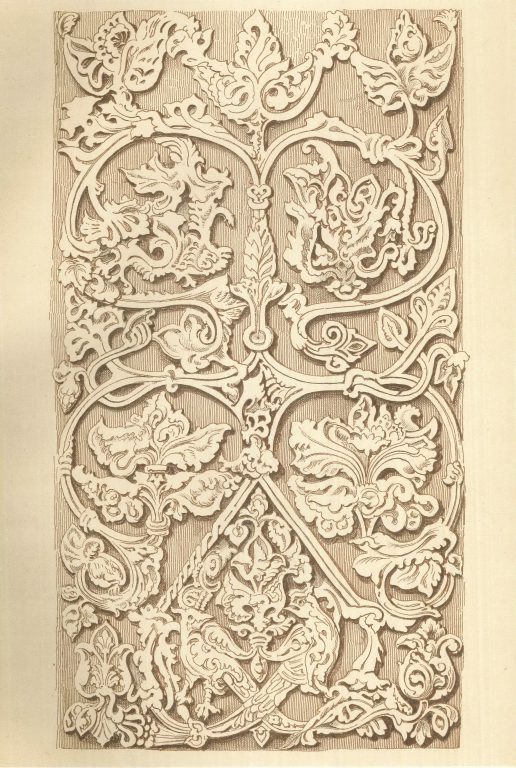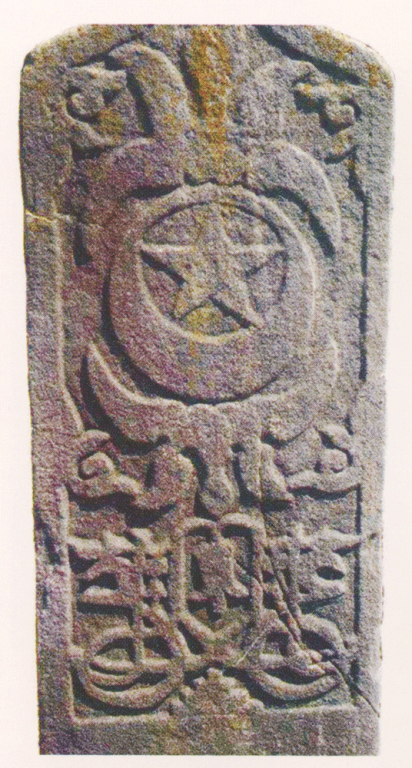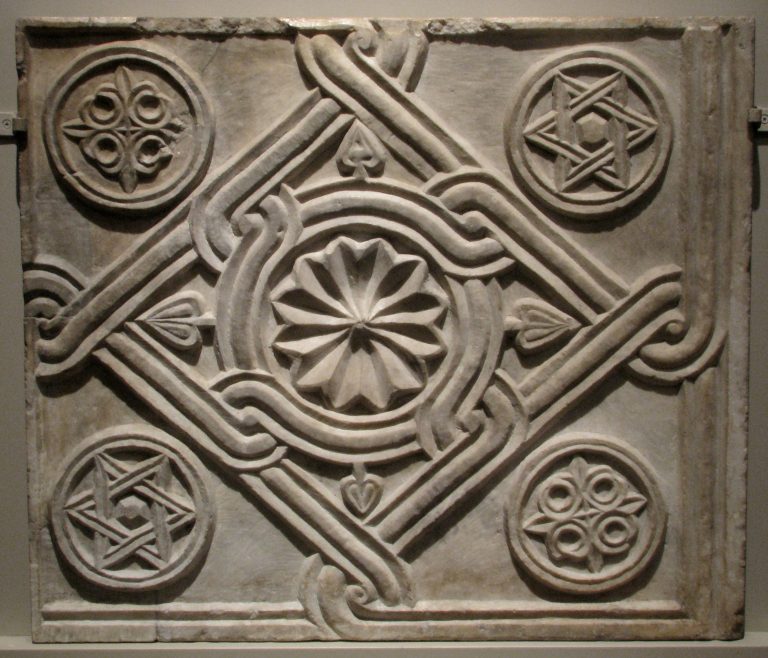

-
Objectdecorative relief: Relief
-
Type of arts & crafts
-
MediumStucco
-
Size7 5/8 Г— 20 3/16 Г— 2 5/16 in. (19.3 Г— 51.3 Г— 5.8 cm)
-
Geography details
Iraq -
Country today
-
Dateca. 6th century A.D.
-
CultureSasanian
-
PeriodSasanian
-
Type of sourceDatabase “Metropolitan Museum of Art”
-
Fund that the source refers toMetropolitan Museum of Art
-
Stucco reliefs were commonly used to decorate the iwans and reception halls of elite Sasanian houses. Many examples were found in excavated houses in the Ctesiphon area including this fragment from Umm ez-Za’tir consisting of a band of alternating palmettes and flowers above a twisted rope design. The use of molds to make stuccos allowed for the creation of large scale repetitive patterns such as geometric and vegetal motifs.
The city of Ctesiphon was located on the east bank of the Tigris River, 20 miles (32 km) south of modern Baghdad in Iraq. It flourished for more than 800 years as the capital of the Parthians and the Sasanians, the last two dynasties to rule the ancient Near East before the Islamic conquest in the seventh century. Systematic excavations in the Ctesiphon area were undertaken by an expedition in 1928–29 sponsored by the German Oriental Society (Deutsche Orient-Gesellschaft). The Metropolitan Museum of Art and the Staatliche Museen, Berlin, undertook a joint expedition for one season in 1931–32. Several excavations were conducted, including at the main palace (Taq-i Kisra), in a small fortified area south of the palace at Tell Dheheb, at multiple houses at the mounds of Ma’aridh, and at additional houses at a small mound called Umm ez-Za’tir.
As part of the larger Ctesiphon Expedition, excavations were conducted at a small mound approximately 2 km east of the Taq-I Kisra. This mound was called Umm ez-Za’tir or Mother of Thyme. Excavations at the site exposed rooms associated with housing. Excavations conducted in the winters of 1928/1929 and 1931/1932 revealed the plan of a 6th century Sasanian house following the typical plan of a mix of square and elongated rooms. Iwans were found on the east and west walls which were decorated with stucco reliefs on the walls and on the arches.






